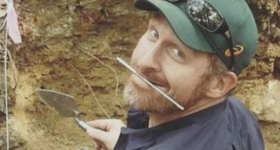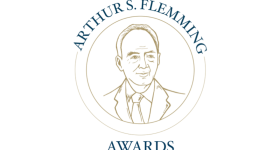How Well Does Your Dog Understand You?
New research at George Washington University suggests that there might be more behind the classic dog head tilt. It could also reveal how dogs process speech.


How Well Does Your Dog Understand You?
New research at George Washington University suggests that there might be more behind the classic dog head tilt. It could also reveal how dogs process speech.

GWU’s Corcoran School of Arts and Design is currently exhibiting a two-part exhibition featuring acclaimed photographers Peter van Agtmael and Wesaam Al-Badry.

Stone Tools Through Generations: 300,000 Years of Human Technology
A study led by Professor David R. Braun reveals that early humans maintained a 300,000-year-old Oldowan stone tool tradition.

76th Annual Arthur S. Flemming Awards Honors Twelve Public Servants
Twelve public servants from a number of federal agencies will be honored at the 76th annual Arthur S. Flemming Awards for their exceptional civil service.

GW to Honor Gilbert R. Cisneros, Jr. and Jacki Cisneros at Spirit of GW Awards Ceremony
The Honorable Gilbert R. Cisneros, Jr. (BA ’94), congressman for California's 31st Congressional District, and Jacki Cisneros, president of the Cisneros Foundation, will receive the award.

Physics Reveals Predictable Patterns in Conflict Casualties
A study led by GWU physics professor Neil Johnson finds Israel‑Palestine conflict casualties follow molecular‑like patterns, aiding prediction and planning.

Public Servants to be Honored at 76th Annual Arthur S. Flemming Awards
Twelve federal employees will be honored with the 76th Arthur S. Flemming Awards, in partnership with TSPPPA, celebrating excellence in science, law, and leadership.

New Study Cracks the Code Behind AI’s Mind
Physics researchers Neil Johnson and Frank Yingjie Huo used physics to dissect and explain the attention mechanism at the core of AI systems.

Ability to Regulate Behavior Assists in Language Development Among Children, New Study Shows
A GW study finds young kids' behavior regulation—a component of executive function—is closely linked to how they process and develop language skills.

Corcoran’s NEXT Festival Returns Bigger & Bolder with Expansion to Second-Floor Galleries
NEXT Festival 2025 at GW’s Corcoran School runs Apr 24–May 16, featuring student work in expanded Flagg galleries with exhibits, performances, and presentations.
